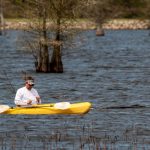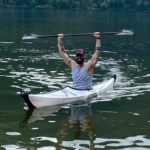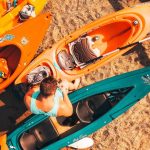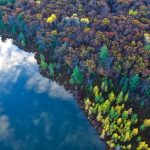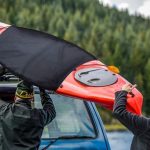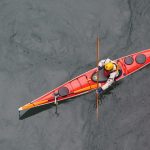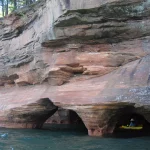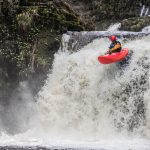To fish in fast moving rivers and streams, you need special skills and a specialized kayak. But how do you choose one? We're here to help!
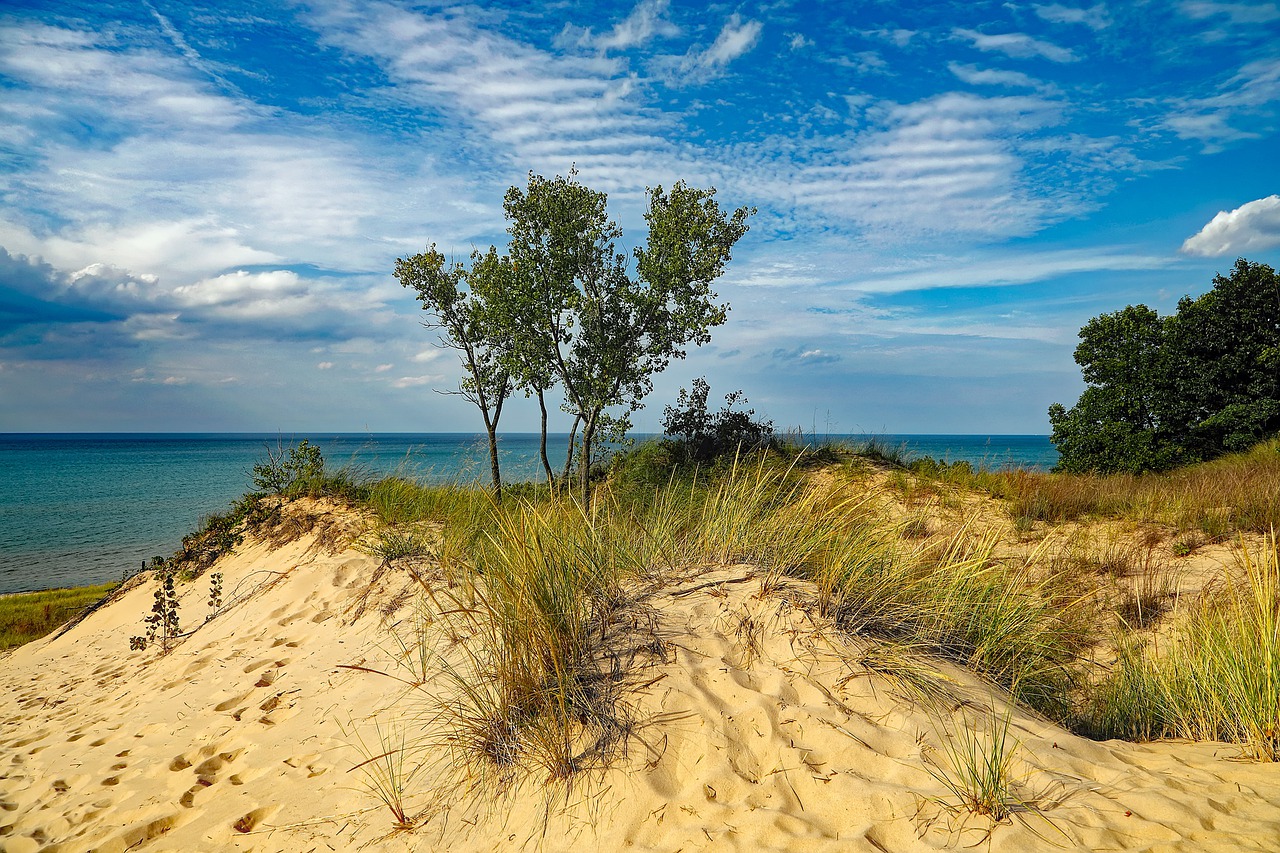
Welcome to the Hoosier State, home to some of the best kayaking spots in the country!
With so many streams, rivers, and lakes in the state, you’ll find there are no end of beautiful places to spend a day (or three) out on the water.
Below, we’ve compiled a list of the best places to go kayaking in Indiana, including some truly unique and picturesque locales unlike anywhere else in the United States.
Read over these amazing destinations, along with information on how to find the right kayaking tours in Indiana, how to stay safe when kayaking in Indiana, and, of course, the state’s kayaking laws.
By the end of this post, you’ll be ready to head out for some wonderfully memorable paddling trips safely and fully armed with all the knowledge you need to have a great time!
15 Best Places to Go Kayaking in Indiana
1. Lake Michigan
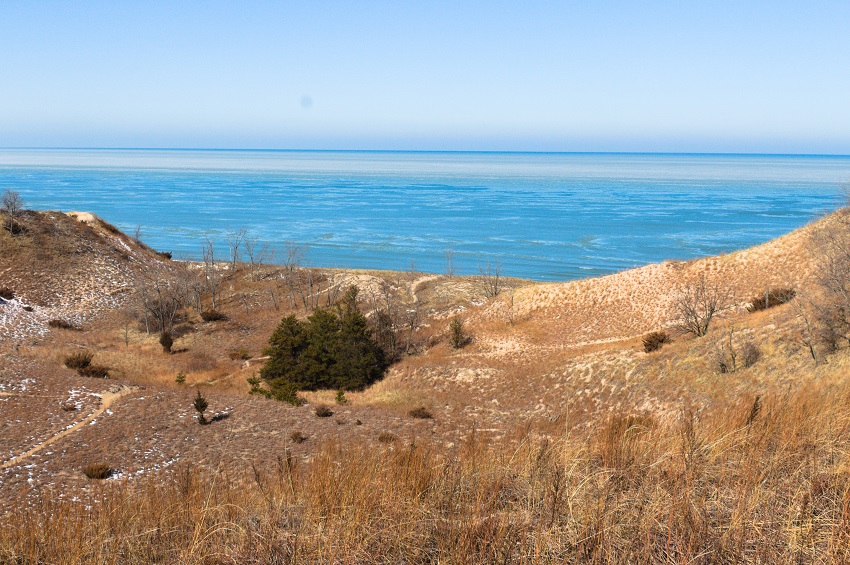
If you’re looking for a sea kayaking adventure but don’t live anywhere near the ocean, no worries! Lake Michigan (like all the Great Lakes) is large enough that it will feel like you’re paddling on the sea, only it’ll be all freshwater and right in Indiana’s back door.
Lake Michigan offers spectacular views of the coastline, beautiful beaches where you can lounge and make camp, and all the waves and currents you could ask for to turn your paddling trip into a sea-worthy adventure. You can paddle for days and still have plenty of water to explore, and you’ll share the waterways with boats and ships of all sizes. Fair warning: the lake is only recommended for beginners on very calm days, otherwise it can be a bit tempestuous and better suited to advanced kayakers.
2. Cedar Lake
Instead of heading to the Great Lakes, pay Cedar Lake a visit and enjoy a smaller body of water that is much calmer, more relaxing, and better-suited to beginners. The lake is formed from natural glacial melt waters, spreading out more than 800 acres, and offering a plethora of rivers, creeks, and streams you can explore.
Kayakers can make landfall anywhere along the shore to enjoy a picnic, nap, or make camp overnight, and there are countless spots to put in and take out. Newbies will find it’s a great place to get their paddles wet for the first time and enjoy a wonderful day out on a calm lake.
3. Blue River
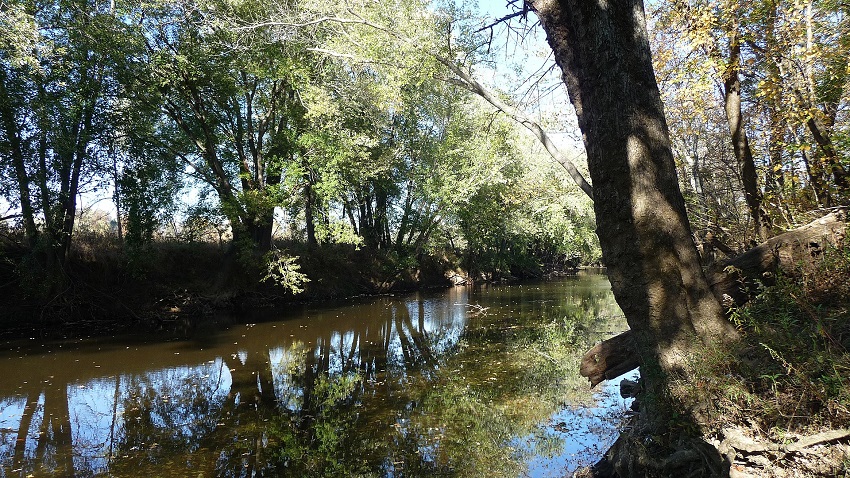
The Blue River is a 57-mile-long stretch of water that ends up dumping into the Ohio River, and it’s home to some amazing and scenic locales. Rolling hills, vast farmlands, lush forests, historic Native American sites, even deep caves you can explore!
The river is also home to an abundance of wildlife—you’ll be able to see everything from turtles to deer to great herons. There are plenty of kayaking tours along the Blue River that can provide you with the gear needed to enjoy a few hours out on the water any time of year.
4. Whitewater River
Don’t let the name mislead you: Whitewater River isn’t as challenging as you might expect. Sure, there are a couple of stretches where the water flows fast and turns into rapids, but they’re intermediate-friendly Class II rapids. For those who are testing their skills and want to tackle something a bit harder than flatwater, the speed and gradient of the river makes for some truly thrilling stretches of faster-flowing river.
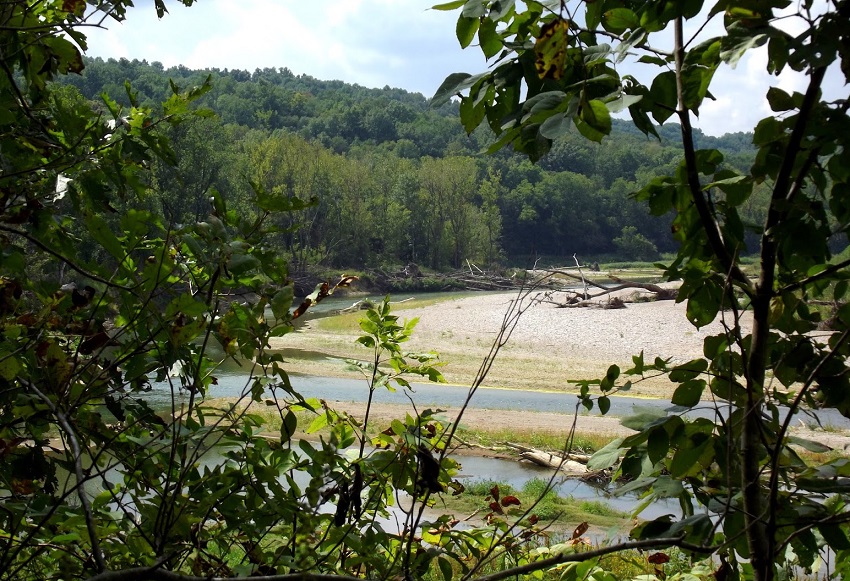
Each of the river’s two forks offer a different adventure and locale to explore, but ultimately it leads into the Miami River before feeding into the Ohio River. With so many routes to consider and sights to see along the 101-mile river, it’s a wonderful place to spend a weekend paddling.
5. Flatrock River
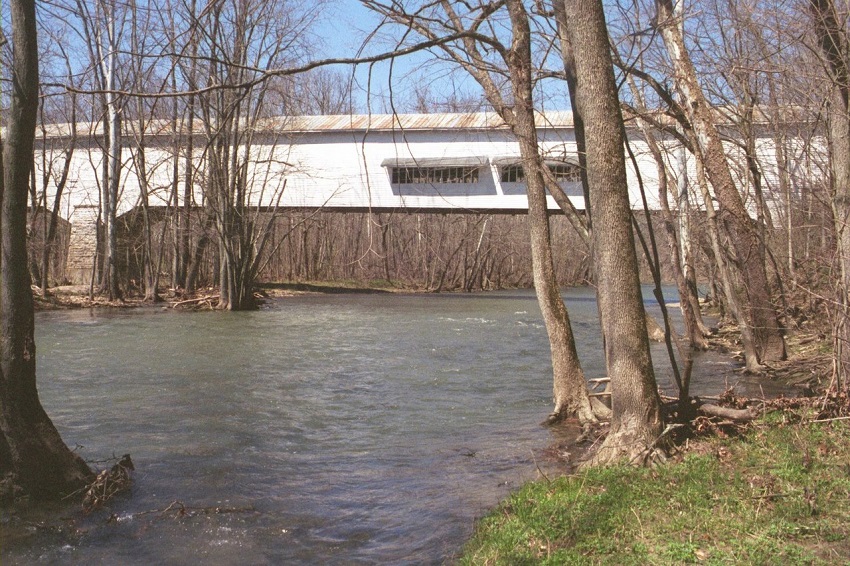
If you want a more relaxing paddle, one better-suited to newbies and/or children, you’ll love Flatrock River. The slow-moving river is almost small enough to be a stream, and you’ll never have to contend with currents or rapids. You can set your own speed or even let the current carry you along downstream. However you do it, it’s guaranteed to be a lovely ride.
Here, you’ll see a variety of lovely trees, including willows, cottonwoods, and sycamores. Over the 100-mile stretches of rivers, you’ll have plenty of places to put in for hikes and make camp overnight. Best of all, you’ll have the river mostly to yourself, so it’s a great place to get away from the hustle and bustle of city life.
6. Big Pine Creek
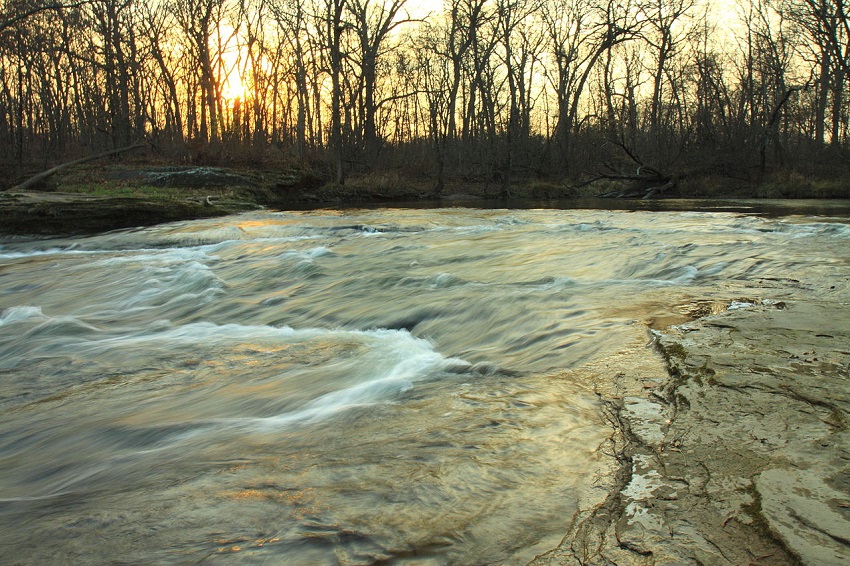
Ready to tackle some real challenges? The rapids at Big Pine Creek will definitely test your mettle and force you to use every shred of kayaking skill you possess. The Class II and III rapids are particularly turbulent after heavy rains, giving an experienced kayakers a challenge worthy of their expertise.
The best route is a 7-mile stretch between Rainsville and Twin Bridges, where you’ll face not only the toughest rapids on the river, but also enjoy gorgeous scenery galore: lush forests, steep cliffs, and rocky gorges. Make sure to visit in the fall when the world around you is a riot of colors.
RELATED: Best Whitewater Kayak: Reviews and Buying Guide
7. Tippecanoe River
Tippecanoe River has long been one of Indiana’s most famous and utilized waterway, where canoers, kayakers, and paddleboarders can enjoy a relaxing ride downstream along what has to be some of the most beautiful vistas in the state.
The river runs through a national state park, which is also a sanctuary for wild ducks, red-headed woodpeckers, warblers, and other species of birds. You’ll find plenty of places to rent kayaks and join up on guided tours to explore this truly one-of-a-kind kayaking destination.
8. Racoon Lake
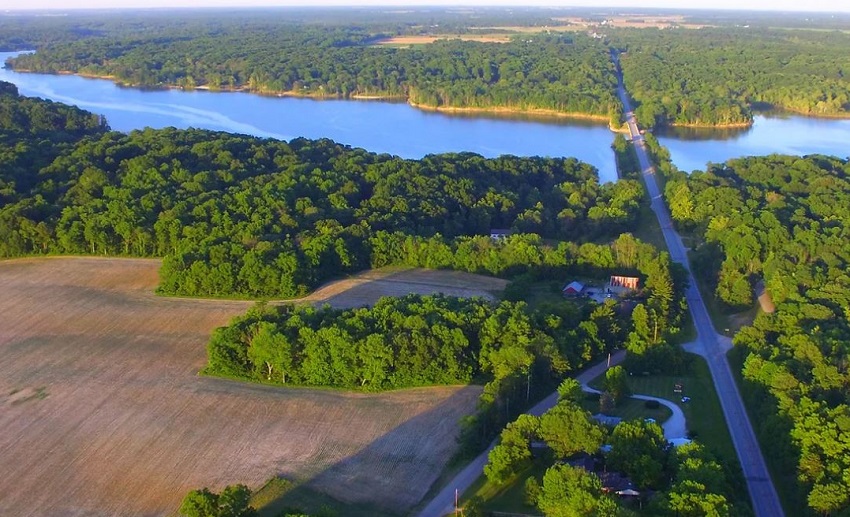
Racoon Lake is another great place to spend a relaxing weekend hiking, camping, and, of course, kayaking. The lake itself is nestled in the middle of ancient forests that serve as home to myriad wildlife, including the racoons from which the lake earns its name. For nature lovers, it’s a truly spectacular locale to escape the urban jungle.
As part of the State Recreation Area, the lake is owned and maintained by the Indiana government. It’s one of the best-preserved and best-maintained of the parks in the state, which brings out lots of boaters, kayakers, paddleboarders, and campers from far and wide. You’d do well to arrive early to stake your claim to a spot on the shore, or even camp the night so you can get out on the water to enjoy a breathtaking sunrise.
9. Lake Monroe
As Indiana’s largest lake, Lake Monroe definitely offers a paddling experience that few other places in the state can. 10,750 acres of gorgeous, surprisingly calm water makes for a wonderful destination to spend a weekend exploring every nook and cranny, circling the lake, or just enjoying time on the water under the bright sun.
The shoreline offers stunning views and myriad places to camp, and your kids will love spotting the wildlife—including white-tailed deer, black vultures, and wild turkeys—everywhere you go. Just be aware that it’s a popular destination for paddleboarders and boaters, so you’ll have to share the water, especially during the busy summer months. You’ll even find some great hunting spots in the area!
10. Pigeon River
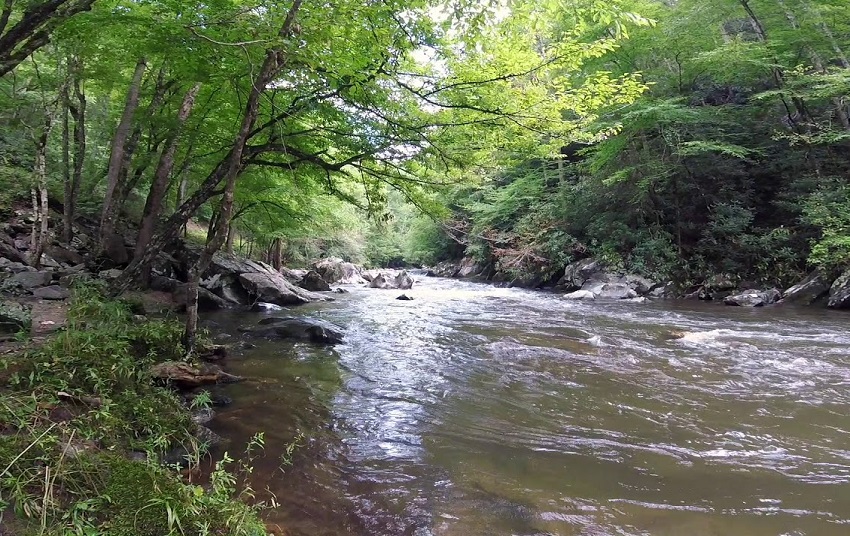
Anglers, this is the destination for you! The waters of Pigeon River are home to bluegill, catfish, and trout aplenty, so you’ve got a great shot at catching something every day you spend out on the water. The narrow, shallow river offers lots of great fishing holes, along with shade to keep the bright sun off you on those hot summer days.
The ample greenery—including buttonbush, ferns, sycamores, and sugar maple trees—make for a truly gorgeous locale, and you’ll feel so much more relaxed when you float down the river in your kayak. You can even paddle downstream and out onto the many lakes that are part of the Pigeon River Fish and Wildlife Area.
11. Sugar Creek
Sugar Creek is a 93-mile stretch of river that you’ll fall in love with the moment you set out on the water. It’s considered one of the most gorgeous in the state, as it cuts through Turkey Run State Park, Shades State Park, and Pine Hills Nature Preserve. You’ll also be able to explore under covered bridges and stop at countless spots to picnic, camp, fish, hunt, or just take a nap.
The river is calm and well-suited to beginners, and it’s definitely kid-friendly if you want to take your family on a kayaking trip. However, be warned that it will be a bit faster-flowing and more turbulent after heavy rains.
12. Indianapolis Downtown Canal
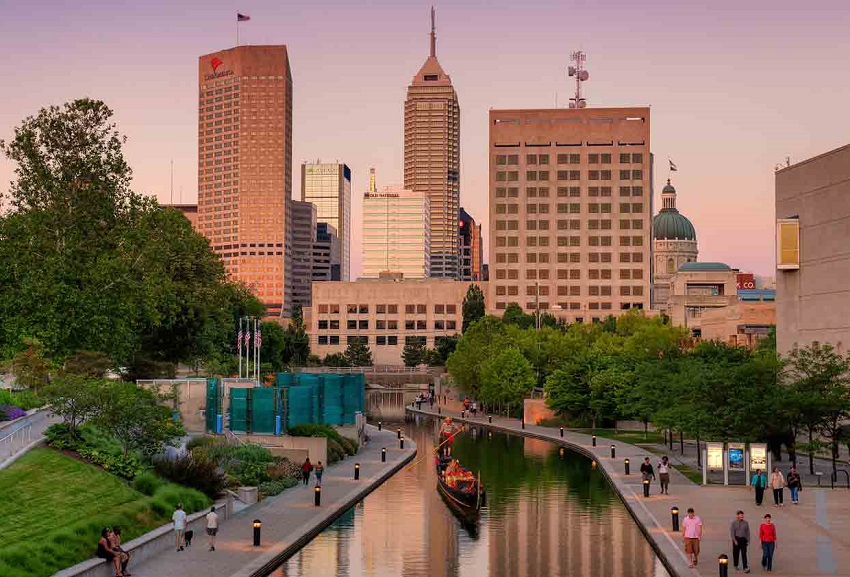
Why leave the city and drive for hours to some lake or river when you can get out on the water right in the heart of Indiana’s capital city? That’s right, the Indianapolis Downtown Canal offers a short, beginner-friendly 3-mile stretch that you can enjoy paddling from spring to fall. Bring your own kayak or rent from the nearby outfitters; however you do it, it’s guaranteed to be a relaxing break from busy city life.
You’ll love paddling through the downtown area, where you’ll enjoy views of the skyline and feel the peace out on the water, away from the traffic and chaos. I guarantee you’ll want to repeat this trip regularly because of how close it is and how relaxing the short, easy paddle is.
13. Kankakee River
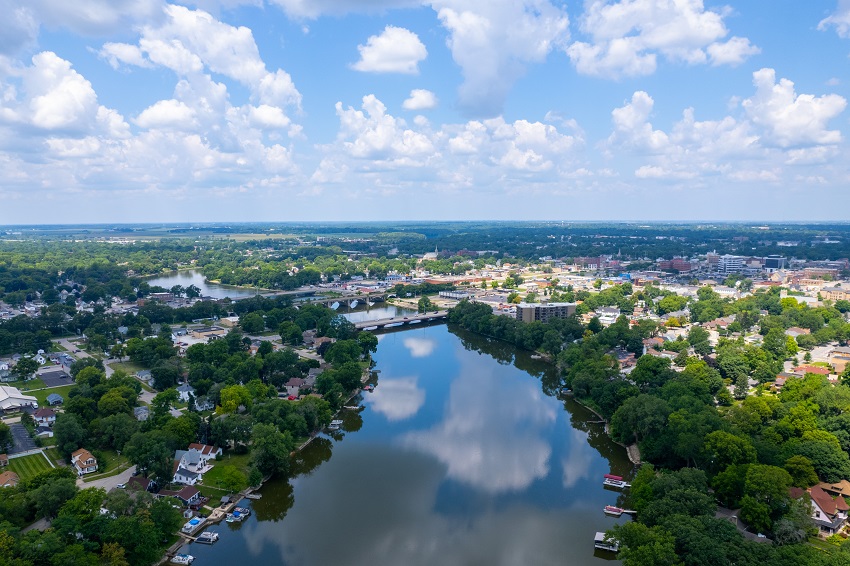
The Kankakee River covers around 3,000 square miles and stretches across 13 counties, and nearly the entire stretch is fully safe to paddle. There are a few spots where you’ll have to portage or even transport your kayak in a vehicle (see more details here), but if you’re looking for an adventure that will take you through Indiana and even into Illinois, this is the paddling trip for you.
The river is home to bald eagles and golden eagles, beavers, greater prairie chicken, deer, and more wildlife, and is filled with many spots for anglers to cast out a line. Whatever your experience level, this river has something to offer you.
14. Fall Creek
The beauty of Fall Creek is that the river is typically fairly easy for most of the year, but after heavy rainfall, it becomes highly challenging and ideal for intermediate and expert-level kayakers. Plan your trip at the right time of year, and you’ll find just the right water conditions for your skill level.
The river meanders through forests and along some of Indiana’s most beautiful countryside. Along its banks, you’ll see turtles, herons, and more wildlife. There are great places to put in for the night or stop for a break, and you’re close enough to Indianapolis that it’s just a short drive out of town—perfect for those busy weekends when you can only escape for a few hours.
15. Indiana Caverns
Oh, we definitely saved the best for last!
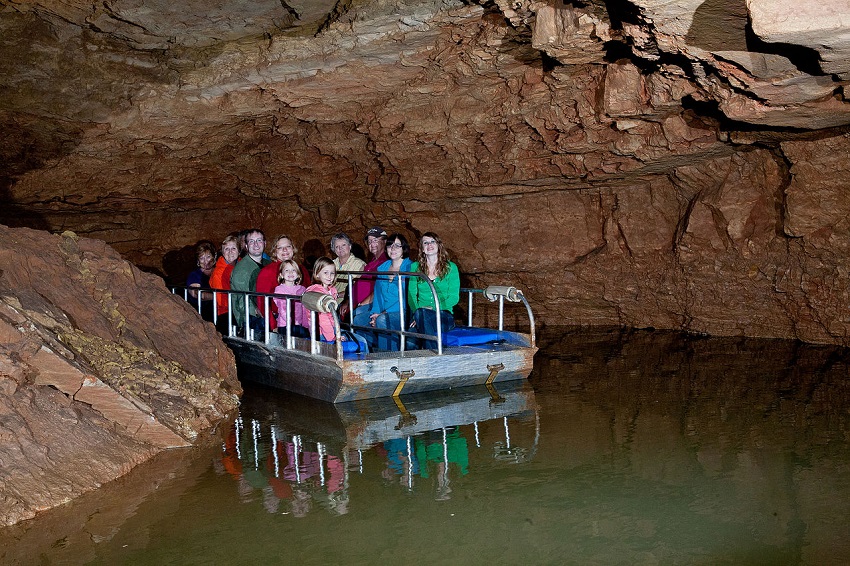
Indiana is home to some truly breathtaking systems of caves that wend their way deep underground, many of them home to rivers and streams that make for a wonderful, exhilarating adventure all around. On the tour of the Indiana Caverns, you’ll climb and crawl through the darkness, kayak upstream, and finish your trip muddy, exhausted, and smiling from ear to ear.
Be warned: this is not a trip you can do on your own. You’ll have to join up with a tour (see below for our recommendation) in order to safely explore the caverns. But it’s absolutely worth it for the memorable experience!
Kayaking Tours in Indiana
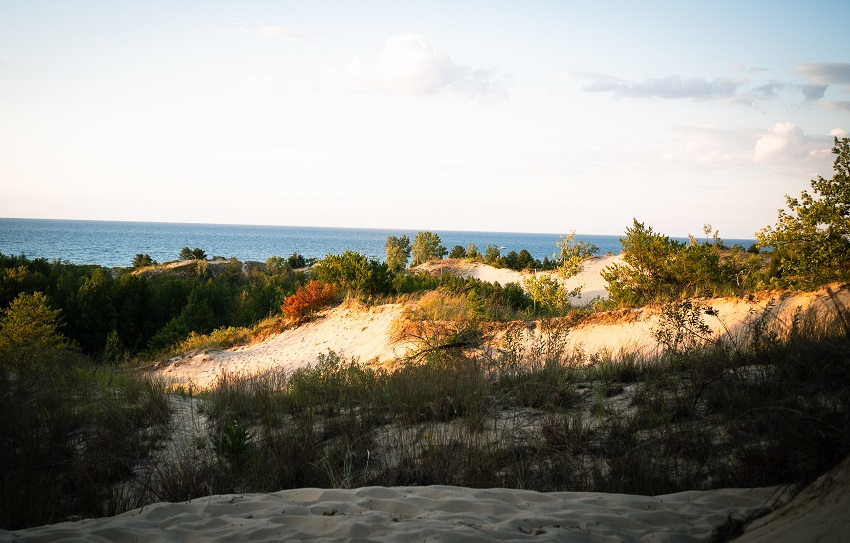
Indiana is home to some wonderful places to kayak, with options for all skill levels.
But as you saw above, there are a few places where kayaking alone either isn’t an option or isn’t the safest. For example, after heavy rains, even calm rivers can flow faster and become dangerous. If you’re not aware of the risks, you could find yourself in serious trouble on a solo paddle.
That’s why it’s a good idea to consider joining up for a kayaking tour when kayaking in Indiana.
As part of a tour, you’ll have access to top-quality, well-maintained gear (ideal if you couldn’t bring your own) and the expertise and knowledge of people who have lived around these waterways their entire lives. Tour guides will know what dangers to avoid, what stretches of the river are most scenic, and which spots on the shoreline of the lake to put in for a few hours of rest or a lovely hike.
Below, we’ve compiled a list of some of the best, most popular kayaking tours in Indiana for you to consider:
- Blue’s Canoe Livery (tours of Driftwood River)
- Morgan’s Canoe (tours of the Whitewater River)
- Riverside Canoes (tours of the Tippecanoe River)
- Indiana Caverns (tours of the Indiana caverns)
- Sugar Valley Canoes (tours of Sugar Creek)
- Blue Spring Caverns (tours of the Bluespring Caverns)
- White River Canoe (tours of the White River)
- Hoosier Canoe and Kayaking Club, an Indiana native water sports club that regularly does trips all along multiple rivers and around many of Indiana’s greatest lakes.
- Indiana Outfitters, a website that lists all the rivers and streams in Indiana, along with links to outfitters that operate along those waters.
- Trip Advisor, which lists all the kayaking and canoeing adventures available in Indiana, with the ability to narrow down your options according to the city where you’ll be visiting.
Other resources that can help you find kayaking tours in Indiana include:
Tips for Safely Kayaking in Indiana
If you’re planning on kayaking in Indiana, here are some tips that will help you stay safe and make the most of your river, lake, creek, or stream paddling trips:
Beware of Rain
Heavy rains make rivers rise and grow more turbulent, and can transform even a calm river into a far more fast-flowing, potentially dangerous waterway. For this reason, you’ve got to be very careful when paddling during or after heavy rains.
Before making any trip plan, take a look at the U.S. Government’s Water Data Index for the state of Indiana. You’ll be able to see exactly where the water level is at—either a safe “average”, dangerously high, or too low to kayak on the shallower streams.
When you’re out on the water, be aware of any rainstorms predicted by the weather forecast, as well as any clouds gathering on the horizon. You are at greatest risk in the days following heavy rainfall, but it’s best to avoid being out on the water if there is lightning in the storm.
Stay on the Water Trails
Every “water trail” is marked clearly on the rivers, lakes, and streams in Indiana. There will be plenty of smaller branches (creeks and streams) that lead away from the main water trail, but they will not be marked because they’re A) too small, B) too dangerous, or C) lead you to private property or land not accessible to the public.
When planning your route, make sure to stay on the clearly marked water trails! You’ll avoid a lot of dangers that way, and you won’t have to spend hours paddling upstream to backtrack from a dead-end.
On many of the lakes and larger rivers, you’ll be sharing the water with fellow kayakers, paddleboarders, canoers, and motorized vessels. On the Great Lakes, there are shipping lanes where full-sized cargo ships and boats of all sizes sail.
Be a courteous boater, and share the waterways courteously. Steer clear of fellow kayakers and paddleboarders to avoid collisions. When paddling on rivers where there are likely to be larger motorized boats, stay on the 25% closest to the shoreline. When crossing the Great Lakes, make sure you’ve got plenty of lights, sound-producing devices, and visual distress signals so you can alert passing boats to your presence and/or call for help if needed.
Know Your Access Points
Every river, lake, and stream in Indiana has public access points to put your kayak in and take it out. These will often be clearly marked on the water trail maps or maps of the state parks where you’ll be paddling. Make sure to know where they are so you can easily unload your kayak from your vehicle into the water at the beginning of your trip and bring the kayak from the water to your vehicle at the trip’s end.
Note: There may be access points that are only accessible by crossing private land. Try to stick with publicly available access points whenever possible; Hoosiers don’t take too kindly to trespassers.
Know Your Skill Level
There will always be dangers and challenges that are just too great for you to tackle, so it’s imperative that you have an accurate assessment of your paddling and kayak-handling skill level before taking on any challenge. The last thing you want is to put yourself and your fellow kayakers in danger by tackling a stretch of rapids that is beyond your abilities. Or, if you’re not an experienced sea kayaker, don’t risk crossing Lake Michigan.
Watch for Anglers and Hunters
There are plenty of spots in Indiana where anglers will cast their lines in prime fishing holes, or where kayak and boat-mounted hunters will travel for prime game spots. Be aware that you are sharing the water with these people, and that their primary focus isn’t on their paddling, but on fishing or hunting.
When you encounter anglers and hunters, exercise respect and courtesy by keeping quiet (so as not to scare off their fish/game) and keeping well away from them. Acknowledge them with a nod or wave, but don’t approach them.
Keep the Water Trails Clean
If you bring any trash with you, take it with you when you leave. Don’t litter or dump your garbage into the rivers, lakes, or streams, or leave trash on the shore or at a campsite. If you are kayaking in a location with no garbage cans, load the garbage into your kayak until you can safely dispose of it later.
To really be a good steward of these natural wonders, bring extra garbage bags with you and collect any trash you find. The more we all take care of the water trails and waterways, the longer we can preserve them.
Respect Wildlife and Natural Habitats
On the rivers, lakes, and streams, you’ll often be lucky enough to see wild animals, fish, game, and birds. Remember that you’re entering their natural habitat. This is their home you’re traveling through, so make an effort to leave them undisturbed. Preserving these natural habitats and the wildlife that lives there is the best way to make sure you will have beautiful paddling destinations for years to come.
Dress for the Conditions
Always dress for the conditions—water conditions first, but weather conditions, too.
For example, if you suspect rain, you’ll want to bring a waterproof poncho or raincoat to slip on over your paddling clothing. The day may be warm enough that you can wear nothing more than board shorts and a T-shirt, but if a storm rolls in, it could grow cold enough that you risk hypothermia even if you never leave your kayak.
Or, on the very sunny days, make sure you’ve packed a long-sleeved shirt, sunglasses, and hat to protect against sunburn.
Read our article, describing the ultimate dress code for paddlers of all kinds.
Travel Smart
Always plan your paddling trips in groups, or at least a pair of paddlers traveling together. Solo adventures may be a lot of fun, but can quickly turn dangerous and put your life at risk if you encounter some challenge or hazard you’re not prepared for. Traveling with at least one other paddler ensures A) someone knows where you are at all times, and B) can go for help if needed.
Make a paddling plan that details the route you’ll take downriver or how long you plan to spend on the lake, then leave that plan with someone who can call for rescue if something goes wrong.
Pack the right gear—including water, food (if needed), PFD, paddle, and safety items—and make sure it’s all in working condition before you hit the water. Never paddle (especially in unfamiliar locations) with defective or damaged gear.
Indiana Kayaking Laws
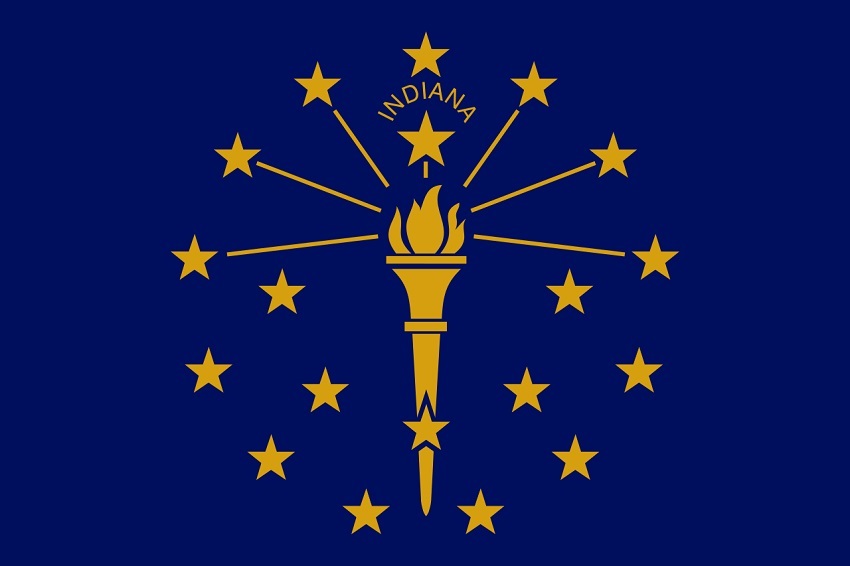
Kayaks are non-motor powered vessels
Because kayaks don’t feature a motor, they are considered “non-motorized”, and thus don’t need a license or registration to operate on Indiana waterways. You will need to obtain a lake permit to operate a kayak on state-owned and maintained waterways.
That being said, if your kayak has a trolling motor mounted, you will need to register it and obtain a license to operate it. (If you don’t plan to use the motor, remove it to save yourself the hassle of having to register it and obtain a license.)
There is no minimum age for operating a kayak.
Manually powered vessels don’t require a license to operate, and can be operated by children of any age.
However, if you are using a trolling motor on your kayak, anyone under the age of 15 can operate it, provided the motor has less than 10 hp.
Kayakers must have one lifejacket on board per person.
The lifejackets must be U.S. Coast Guard-approved (Types I, II, III, and V are all suitable). It must also be on board at all times, within easy reach and accessible as needed.
Children under the age of 13 must wear the PFD whenever they’re out on the water.
Kayakers must carry lights at “low visibility times”.
This refers to anytime between sunset and sunrise.
As non-motorized vessels, kayaks must have a white light that is visible at 360-degrees for up to 2 miles. The same goes for kayaks and canoes with trolling motors.
Kayakers don’t need to carry a sound-producing device
Larger vessels over 26 feet must carry a sound-producing device, which includes a whistle or air horn. Kayaks aren’t required by law to carry such devices, but it is recommended as a smart safety precaution.
Kayaks must carry visual distress signals (VDS).
Kayaks don’t need to carry VDS devices to signal during the day, but they have to have at least one capable of signaling for help after dark. This may include flares and distress lights.
Kayakers absolutely can get a BWI
BWIs are the boating equivalent of a DWI, or “Boating While Intoxicated”. If you are visibly under the effects of drugs or alcohol, you may be subjected to taking a sobriety test. While the “standard” in Indiana is a Blood Alcohol Level of 0.08%, you can be arrested in Indiana with a BAL as low as 0.05%.
The penalties for a BWI in Indiana are:
- On your first offense, Class C misdemeanor and all loss of driving/boating privileges. Jail time is possible.
- If further offenses occur within 5 years, you will be subjected to further fines, jail time, and loss of all driving/boating privileges.
- If your operation of a vessel (motorized or non-motorized) leads to the death of another person, you may be charged with a felony crime.
All violators, regardless of the severity of the crime, will be required to complete a mandatory boating education course before your driving/boating privileges are reinstated.
Kayaking in Indiana FAQs
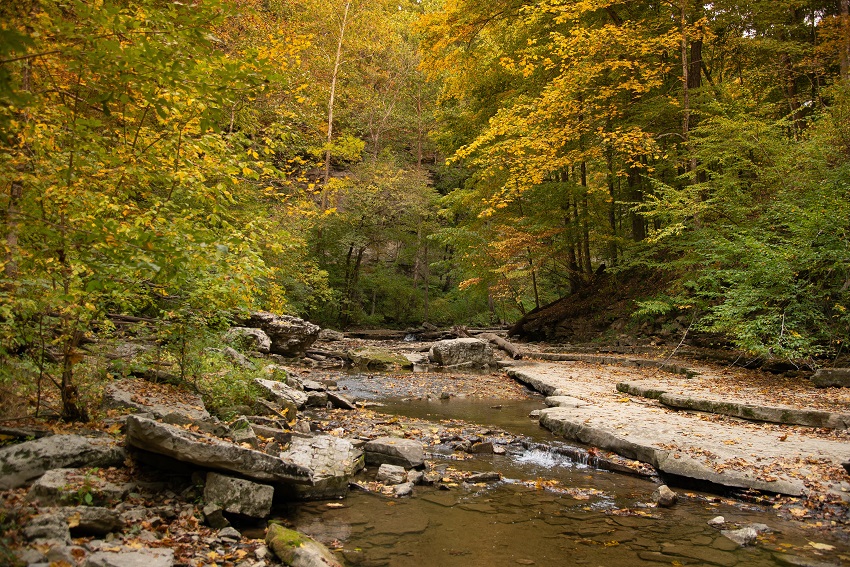
You absolutely can! The Indianapolis Downtown Canal paddle is one of the best for city-dwellers who want to get out on the water but don’t have time to trek out to a lake or river away from the state’s capital. It’s a short paddle—just 3 miles long—but wonderfully relaxing and a great way to fit in a kayaking adventure even when on a business trip.
As you saw above, “unpowered vessels” that don’t have a motor installed do not require a license to operate in Indiana. That includes all kayaks, including inflatables.
However, be aware that some rivers and lakes require a permit, particularly those found in state parks run by the Indiana government. You can find a complete list of the lakes that require/don’t require permits here, as well as information on where and how to buy the permit.
No. Because a kayak isn’t a powered vessel, there is no need to purchase boat insurance in order to operate your kayak in the state of Indiana.
Yes, you absolutely can! While you may need to obtain a permit (see above) in order to kayak on state-run lakes and rivers, the truth is that you are legally allowed to kayak anywhere in Indiana.
That being said, it’s important to note that some waterways—for example, Lake Michigan—may also be used by ships and boats transporting cargo around the state/country. It’s imperative that you remain aware that you share the waterways and have to be responsible for your own safety. It may be best to steer clear of the busier, heavier-traffic lakes and rivers until you can paddle at an intermediate or even expert level.

